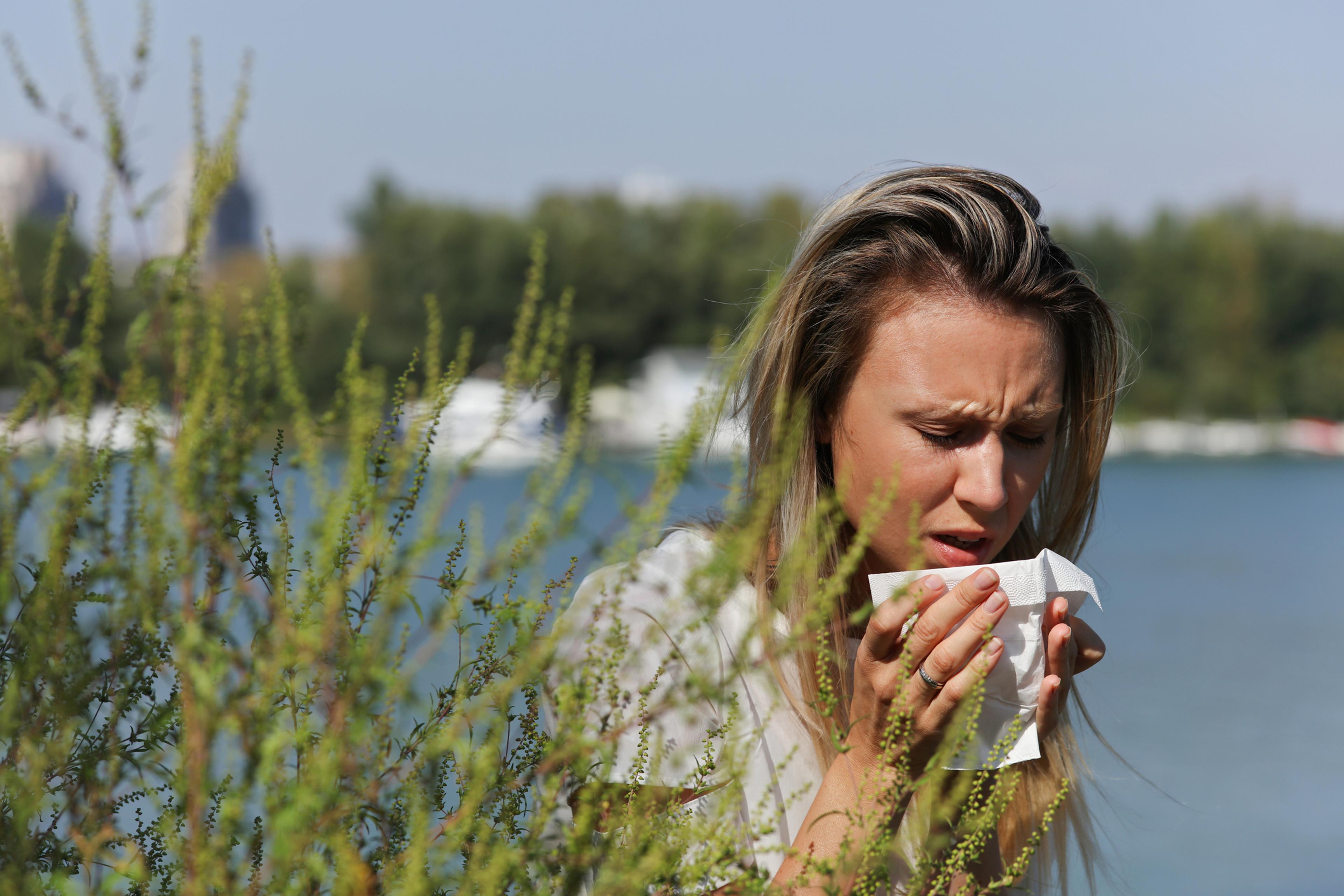
You’ve probably walked past ragweed plants countless times if you’re a lifelong Michigander. If you find yourself sneezing or rubbing your eyes after encountering them, you may be allergic to the pollen those plants release into the air.
This nondescript weed – with its ragged, fernlike leaves and innocuous yellowish-green flowers – grows wild in most regions of the U.S., most prominently across eastern and Midwestern states. You’ll often find ragweed growing along roadsides, riverbanks and in vacant lots and fields.
According to the Asthma and Allergy Foundation of America (AAFA), almost 50 million Americans suffer from symptoms from an allergy to ragweed pollen between the late summer and early fall each year.
What to know about ragweed pollen
Ragweed season typically starts in August and may span 10 weeks. These plants bloom and produce a fine-powder pollen until the first hard freeze of the winter. In most areas in the U.S., ragweed pollen reaches peak levels in mid-September, per the American College of Allergy Asthma and Immunology (ACAAI).
Ragweed flowers mature and release pollen when nights start getting longer at the end of the summer. Ragweed pollen counts are the highest in the morning when these factors after sunrise initiate the release of pollen:
- Breezes
- Humidity
- Warm weather
How to tell if you’re allergic to ragweed
In general, an allergic reaction happens when the immune system mistakes a substance for a foreign invader, going into defense mode and releasing chemicals to try and eliminate the invader. The chemicals released during this response causes allergy symptoms.
A ragweed allergy occurs when ragweed pollen is inhaled from the air, at which point symptoms may surface. If you do have a ragweed pollen allergy, you’ll usually only experience symptoms when ragweed pollen is in the air.
What are ragweed allergy symptoms?
Ragweed pollen can cause seasonal rhinitis, also known as hay fever, which affects up to 25 million people per year, according to the ACAAI. Symptoms will resemble symptoms of other allergies and include:
- Headaches
- Itchy or watery eyes
- Itchy throat
- Nasal congestion
- Rashes or hives
- Runny nose
- Sneezing
Ragweed pollen can also aggravate asthma symptoms, which may lead to coughing and wheezing. You may be more likely to develop a ragweed allergy if you have a history of asthma or eczema, or if your family has a history of allergies.
What foods should you avoid if you are allergic to ragweed?
In addition to the above symptoms, a ragweed pollen allergy can cause itching or swelling in or around your mouth when you eat certain foods, due to pollen food allergy syndrome (PFAS).
PFAS occurs when your immune system confuses ragweed pollen with foods like these:
- Banana
- Cantaloupe
- Cucumber
- Honeydew
- Sunflower seeds
- Watermelon
- White potato
- Zucchini
How to manage and treat a ragweed allergy
Speak with your primary care provider (PCP) if you suffer from hay fever symptoms in the late summer or early fall. Your PCP may facilitate an appointment with an allergist, who can make a diagnosis with a skin test.
According to the ACAAI, a skin test involves applying a diluted allergen to the surface of your skin and waiting 15 to 20 minutes to see if a reaction – such as a raised red bump that itches – occurs. Your PCP may also do a blood test to see if you have the antibody to ragweed, per the AAFA.
While ragweed pollen allergies are not curable, they are treatable. Your PCP or allergist may recommend antihistamines and other allergy medications. Talk to your PCP or allergist about taking medication two weeks before symptoms typically reach their peak, to get ahead of ragweed allergy season.
Two immunotherapy options are available for severe cases of ragweed allergy, per the ACAAI:
- Allergy shots, which can help your body build resistance.
- Oral tablets that dissolve under your tongue taken 12 weeks before ragweed season begins.
Tips to manage ragweed pollen allergies
Track your area’s pollen count: you can visit the National Allergy Bureau for daily pollen count information. Many local news and media outlets will also report the pollen count. Finally, free smart phone apps like Allergy Plus by Pollen.com and Pollen Wise track pollen counts as well.
Always keep your windows closed: this tip extends to both your home and car.
Limit outdoor activity: remain inside as often as you can, especially during the morning.
Change clothes after spending time outdoors: pollen can stick to your clothes, hair or your pet and make its way into your home. If you spend extended time outdoors, shower when you return home before lounging and possibly spreading ragweed pollen throughout the house.
Keep reading:
- What to Know About the New COVID-19 Booster Shots
- How Music Can Improve Productivity
- When is Flu Season?
Photo credit: Getty Images





